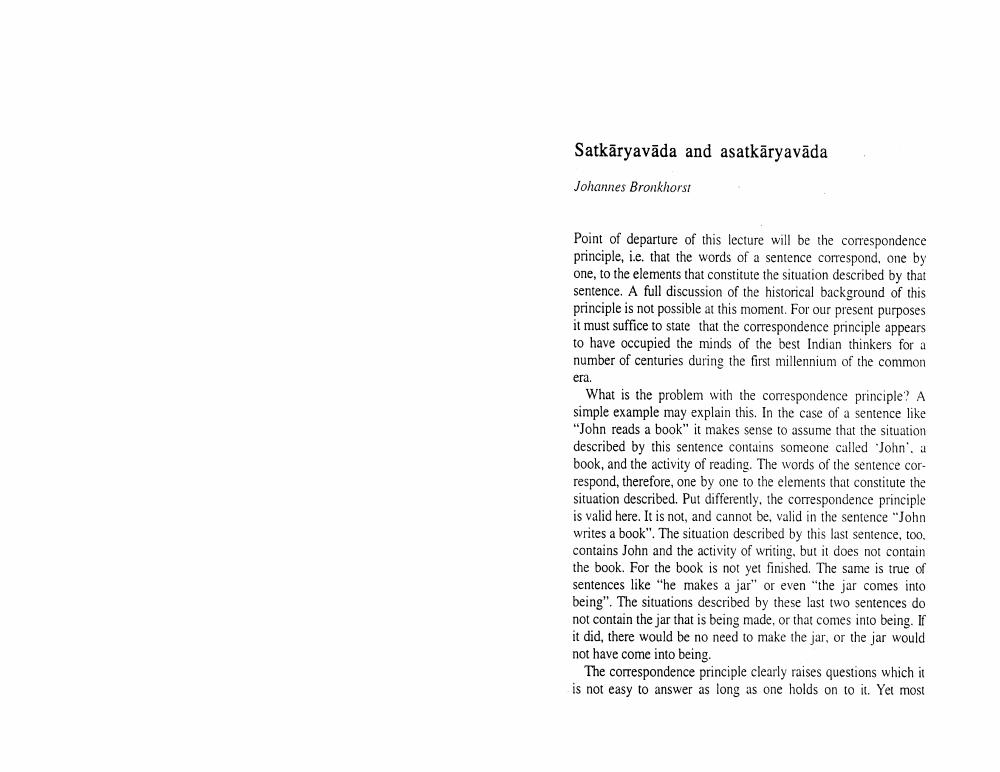Book Title: Satkaryavada And Asatkaryavada Author(s): Johannes Bronkhorst Publisher: Johannes Bronkhorst View full book textPage 1
________________ Satkāryavada and asatkaryavāda Johannes Bronkhorst Point of departure of this lecture will be the correspondence principle, i.e. that the words of a sentence correspond, one by one, to the elements that constitute the situation described by that sentence. A full discussion of the historical background of this principle is not possible at this moment. For our present purposes it must suffice to state that the correspondence principle appears to have occupied the minds of the best Indian thinkers for a number of centuries during the first millennium of the common era. What is the problem with the correspondence principle? A simple example may explain this. In the case of a sentence like "John reads a book" it makes sense to assume that the situation described by this sentence contains someone called 'John', a book, and the activity of reading. The words of the sentence correspond, therefore, one by one to the elements that constitute the situation described. Put differently, the correspondence principle is valid here. It is not, and cannot be, valid in the sentence "John writes a book". The situation described by this last sentence, too. contains John and the activity of writing, but it does not contain the book. For the book is not yet finished. The same is true of sentences like "he makes a jar" or even "the jar comes into being". The situations described by these last two sentences do not contain the jar that is being made, or that comes into being. If it did, there would be no need to make the jar, or the jar would not have come into being. The correspondence principle clearly raises questions which it is not easy to answer as long as one holds on to it. Yet mostPage Navigation
1 2 3 4 5 6 7
